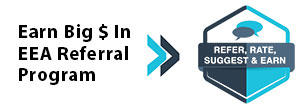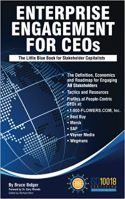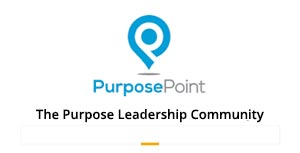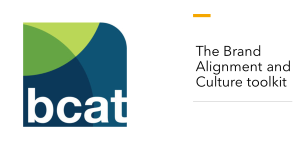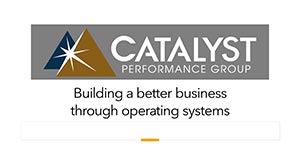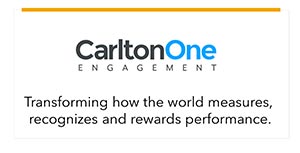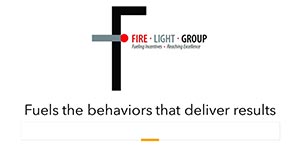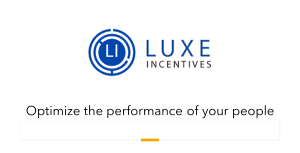The Reasons the Current Ad Hoc, Reactive Approach to People Management Doesn’t Work
The Lessons of Total Quality Management
What Research Has Taught Us That Remains Largely Ignored
The Last Frontier: Impact Measurement at Our Own Organizations
Stakeholder engagement practices today resemble the world to quality management in the 1980s when the Japanese entered the US market employing the total quality management practices introduced there largely by W. Edwards Deming, a quality advocate largely ignored in the US at that time. Long before the days of social media, the quality business was filled with buzzwords and processes like quality circles, suggestion programs, performance improvement, continuous improvement, but much of these activities were reactive and poorly aligned until the emergence of “total quality management,” essentially a strategic management approach versus the reactive, ad approach.
What drives stakeholder engagement and how to connect it to achieving the purpose, goals, objectives, and values of the organization? Linkedin feeds are filled with prescriptions including:
- Great leadership able to articulate a vision that all stakeholders embrace and effective front-line managers that harmonizes the interests of all stakeholders in the organization's purpose, goals, objectives, and values.
- A culture that eats strategy for lunch.
- Uplifting workplace and customer experiences.
- Genuine expressions of appreciation to all stakeholders.
- Effective, gamified training.
- Engaging communications, digital, print, face-to-face, three-dimensional, etc.
- Memorable rewards and recognition.
- Job design to make work more meaningful.
- Diversity, equity, and inclusion.
- Stakeholder engagement and management analytics.
The Lessons of Total Quality Management
Baby boomers can vaguely remember the days when “Made in Japan” stood for junk. Today, the top 10 cars in the Consumer Reports list of best-rated cards is dominated by the Japanese. Using the strategic and systematic approach advocated Deming and others, now embodied in ISO 9001 standards used in an estimated 1.2 million or more facilities around the world, the Japanese not only transformed the country’s manufacturing brand but has permanently dislodged US companies of enormous percentages of market share in many industries.
Note: Unlike third-world countries that benefited from the desire of US companies to lower costs by offshoring, the Japanese beat the US with highly paid employees.
To this day, despite having embraced ISO 9001 certifications, US auto manufacturers and other companies have failed to achieve Japan’s high levels of quality and customer satisfaction, largely due to the failure in the US to address the human factor at the heart of the Japanese system and of success in quality management. Many Japanese organizations maintain a higher level of cooperation with workers because stakeholder engagement, autonomy, and voice rank among the fundamental requirements for success. They rarely face strikes.
Deming and other TQM advocates have offered different approaches to implementation but all have in common the need for a system to clearly identify the purpose, goals, objectives, and values of the organization or specific endeavor; actively involve all stakeholders in every step of the planning, implementation, and evaluation part of the process; give stakeholders the autonomy to make decisions; make sure they have the knowledge and tools they need to make the right ones; create a culture of collaboration, innovation, respect, and appreciation; enable everyone to share in success, and use all the metrics to continuously improve processes.
In the 2000s, the working group that all ISO process standards recognized the role played by all stakeholders by creating what is known as Annex SL, a general framework applying to all related standards requiring them to demonstrate how the process addressed the interests of all stakeholders.
In other words, just like any other endeavor, the best results occur when all interested parties energetically sing from the same choir.
What Industry Research Has Taught Us But Which Remains Largely Ignored
The different players in the world of incentives, rewards, recognition, motivational events, and other engagement practices have published potentially
 hundreds of studies outlining effective practices and yet the low state of customer and employee engagement and loyalty speaks for itself. The analogy to the chaotic state of quality management in the 1980s remains striking.
hundreds of studies outlining effective practices and yet the low state of customer and employee engagement and loyalty speaks for itself. The analogy to the chaotic state of quality management in the 1980s remains striking.Because of a long tradition of silos, practitioners of engagement come at it from different perspectives. The leadership and culture specialists focus on management. The advocates of custom and employee experience believe that it’s the daily interactions that count. Those involved with training, the various forms of communication, rewards and recognition, DEI, job design all emphasize the roles their tools play.
The research says they are all right.
While there is significant overlap, impact metrics differ from those used in sustainability reporting in that they are used specifically for better management purposes, not public disclosures. Independent auditing generally is not required because failure to track authentic data equals cheating at Solitaire.
The need for a holistic system. In 2002, the Incentive Research Federation published the study, “Incentives, Motivation, and Workplace Motivation,” to identify what factors contribute to fostering the proactive involvement of all stakeholders. Consisting of a meta-analysis of research covering all aspect of motivation, the author Harold Stolovich, at that time a Clinical Professor of Human Performance at Work at the University of Southern California, found that incentive programs could yield sales increases as high as 45%, but only if they were run in a holistic manner that addressed all the levers of engagement—training, communications, purpose, incentives, recognition, etc.
Despite this compelling research, there is little evidence that most organizations apply this holistic, proactive approach to how they engage stakeholders of
 any kind, except ironically in manufacturing.
any kind, except ironically in manufacturing.Effective measurement remains lacking. Two years later, in 2004, the American Productivity and Quality Center created the Master Measurement Model for the Incentive Research Foundation inspired by widely used total quality management practices to demonstrate how to apply to people engagement management the same process already well established in TQM. While I know of one company, Luxe Incentives, that made a go of using these processes, to this day end-users have shown little interest in this level of program design and management, with little evidence their solution providers presented this impact measurement option to anyone.
The customer-employee connection. In the 2000s, several studies identified a connection between employee and customer engagement and financial results within organizations. In the early 2000s, it began to estimate the cost of disengagement to the US companies along with publication of national employee engagement scores. In 2005, Harvard Business Review published “Manage Your Human Sigma,” by John H. Fleming, Curt Coffman and Jim Harter of Gallup sharing research that demonstrated a direct connection between having higher levels of employee and customer engagement and enhanced loyalty and financial results. This was part of Gallup’s efforts to create a practice to help organizations make this connection. Little evidence exists to suggest that many organizations to this day strategically address this connection.
In the same decade, the Forum for People Performance Management and Measurement (no longer in existence) at the Medill School at Northwestern University, published multiple research studies finding a link between high levels of customer and employee engagement and financial results, including, “Linking Organizational Characteristics to Employee Attitudes and Behavior – A Look at the Downstream Effects on Market Response & Financial Performance.” Using a different methodology, it came to the same conclusions as Gallup. (Note: I was head of research for the two organizations that funded these studies at the time.)
The stock price connection. Between 2012 and 2018, using the services of analytics firm McBassi & Co. and its Good Company Index (now defunct), the
.png) EEA supported a six year Engaged Company Stock Index based on 13 metrics of employee, customer, and community engagement. It outperformed the S&P 500 by over 37% over six years.
EEA supported a six year Engaged Company Stock Index based on 13 metrics of employee, customer, and community engagement. It outperformed the S&P 500 by over 37% over six years.In 2016, the JUST US Large Cap Diversified Index (JULCD) was created based on principles similar to the EEA mock ETF but based on a survey of priorities of Americans. It delivered cumulative returns of 231.9%, outperforming the Russell 1000 Cap-Weighted Index by 11.4 percentage points. Meanwhile, our JUST 100 Index has generated an impressive 49.7 percentage points of alpha over its benchmark, with returns of 125.7% versus 76.1% for the Russell 1000 Equally Weighted Index since March 2019.”
That same year, Alex Edmans, a Professor at the London Business School, published in Harvard Business Review, a study finding that the publicly held Great Places to Work™ outperformed the S&P 500 by over 3% per year.
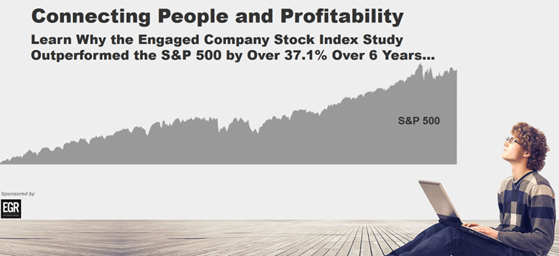 More recently, in the early 2020s, researchers at the analytics firm Irrational Capital have identified a Human Capital Factor through analysis of 180,000 datapoints over 13 years finding that organizations with high levels of employee engagement, pride, and appreciation outperform the major stock market indices by 4% or more per year over time, something even managed investments rarely accomplish over time.
More recently, in the early 2020s, researchers at the analytics firm Irrational Capital have identified a Human Capital Factor through analysis of 180,000 datapoints over 13 years finding that organizations with high levels of employee engagement, pride, and appreciation outperform the major stock market indices by 4% or more per year over time, something even managed investments rarely accomplish over time.The Last Frontier—Impact Measurement at Our Own Organizations
What is disengagement of customers, employees, supply chain and distribution partners costing our own organizations? What data is lurking beneath the surface that investors, boards and C-suite executives need to know that could have a direct impact on their financial returns and stakeholder experiences.
Using ISO (International Organization for Standardization) 30414 human capital, 10018 people engagement, other standards, and a transparent set of human capital and stakeholder engagement criteria, the Enterprise Engagement Alliance has developed an open-source approach to helping any organization measure the actual impact of almost any engagement practice on the purpose, goals, and objectives of the organization or of a specific endeavor.
Click here for a sample of metrics being developed for employee engagement.
As part of the Enterprise Engagement Alliance’s Project People 2025, we will be publishing a preliminary list of impact measures that any organization can use transparently to calculate the impact of almost any people investment. We have created an Impact Council inviting people to comment on proposed measurement metrics and will share for public review proposed metrics in summer 2025.
For More Information
Bruce Bolger, Founder
Enterprise Engagement Alliance
914-591-7600, ext. 230
Bolger@TheEEA.org


